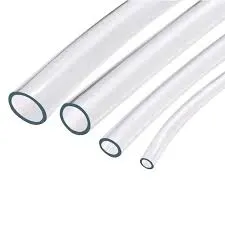Aug . 14, 2024 12:00 Back to list
Understanding the Benefits and Applications of PVC Pipe Fittings in Various Industries
The Importance of PVC Pipe Fittings in Modern Plumbing
Polyvinyl chloride (PVC) pipe fittings have become a cornerstone in modern plumbing systems due to their versatility, durability, and cost-effectiveness. These fittings are essential components that connect sections of PVC pipes, facilitating the smooth flow of water and other fluids in residential, commercial, and industrial settings. This article will delve into the significance of PVC pipe fittings, their types, applications, and the advantages they offer.
Types of PVC Pipe Fittings
PVC pipe fittings come in various shapes and sizes, each designed for specific purposes. The most common types include
1. Elbows These fittings allow pipes to change direction at various angles, usually at 45 or 90 degrees. Elbows are crucial in navigating pipes around obstacles.
2. Tees T-shaped fittings used to connect three sections of pipe at right angles. These are commonly utilized in branching pipelines.
4. Adapters These fittings help connect pipes of different sizes or materials, ensuring a seamless transition from one to another.
5. Caps and Plugs Used to seal the ends of pipes, preventing leaks and protecting the system from unwanted contaminants.
Applications of PVC Pipe Fittings
pvc pipe fittings

The use of PVC pipe fittings spans numerous applications. In residential settings, they are widely used in plumbing systems for water supply and drainage. PVC fittings are equally common in irrigation systems, where they connect pipes that transport water to agricultural fields or gardens.
In commercial and industrial contexts, PVC fittings play a vital role in chemical processing, where their resistance to corrosion makes them suitable for handling various chemicals. Additionally, they are frequently used in HVAC (Heating, Ventilation, and Air Conditioning) systems for ductwork and air distribution.
Advantages of PVC Pipe Fittings
1. Durability PVC fittings are resistant to corrosion, rust, and degradation from chemicals, making them ideal for long-term use in various environments. Unlike metal fittings, they do not corrode over time, preserving the integrity of the plumbing system.
2. Lightweight PVC is significantly lighter than metal, making it easier to transport and install. This lightweight nature also reduces the overall load on structures, which is beneficial in construction.
3. Cost-Effective The production and installation costs of PVC fittings are lower compared to other materials. Their long lifespan reduces the need for frequent replacements, leading to significant savings over time.
4. Easy Installation PVC fittings can be easily cut, shaped, and joined using solvent cement or mechanical fittings. This ease of installation allows for quicker project completion and less labor expense.
5. Low Maintenance Once installed, PVC pipe fittings require minimal maintenance, further reducing the total cost of ownership. Their resistance to biological growth means that there is less risk of clogs related to algae or bacteria.
Conclusion
In conclusion, PVC pipe fittings are an indispensable part of modern plumbing and piping systems. Their diverse range of types and applications showcases their versatility, while the advantages they offer make them a popular choice in various industries. As plumbing technology continues to evolve, the reliance on durable, cost-effective materials like PVC will likely continue to grow, solidifying its place as a fundamental component in the efficient management of water and fluid movement in our everyday lives.
-
High-Quality PPR Pipes and Fittings Durable ERA PPR & PVC PPR Solutions
NewsJul.08,2025
-
Black HDPE Cutting Board - Durable, Non-Porous & Food Safe HDPE Plastic Cutting Board
NewsJul.08,2025
-
High-Quality CPVC Panel Durable HDPE & PVC Panels Supplier
NewsJul.08,2025
-
Double PE Welding Rod Supplier - High Strength, Durable & Versatile Welding Solutions
NewsJul.07,2025
-
High-Quality PVC-O Pipe Supplier Durable 75mm PVC Pipe & Connections Leading PVC Pipe Company
NewsJul.07,2025
-
HDPE Drainage Pipe Supplier – Durable & Corrosion-Resistant Solutions
NewsJul.06,2025

